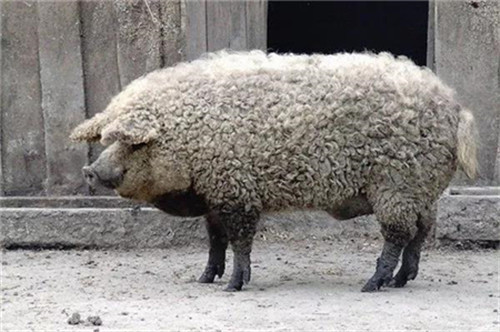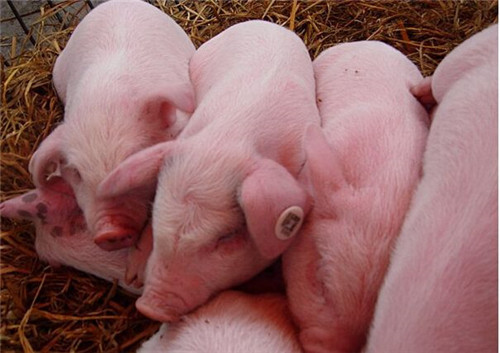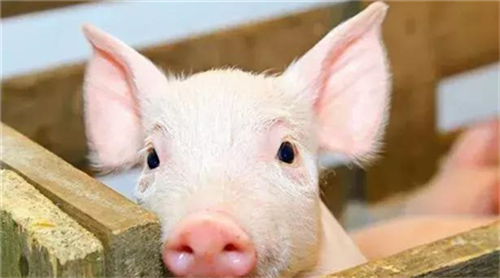Do you know the method of prevention and treatment of swine scabies?
Sarcoptes scabies is a common disease of pigs, the infection rate of pigs in large scale pig farms is high, there is a rising trend year by year. Sarcoptic mite parasitizes in the tunnel dug by the insect body in the deep layer of pig skin, causing red spots, pustules, scabs, cracks and other lesions on the skin of the affected part. Due to the severe itching of the parasitic part of sarcoptic mite, the infected pig rubs the corner and railing from time to time, causing skin rash, affecting appetite, slow growth, decreased disease resistance, feed reward is discounted, sarcoptic mite disease has become one of the main diseases endangering pig industry.
Due to the prevalence of infectious diseases in pigs in recent years, people focus on epidemic prevention on diseases such as blue ear disease and swine fever, while scabies usually does not cause death, bringing only hidden economic losses to pig farms, so this disease is often ignored by pig farmers. Nowadays, infectious diseases in many pig farms are relatively stable. In order to further improve the economic benefits of pig farms and enhance the physique and disease resistance of pigs, large-scale pig farms should pay attention to the prevention and control of scabies.
Sarcoptes scabies is an ectoparasite, different from other infectious diseases, the current study of the disease is more thorough, the diagnosis of the disease is not difficult, its symptoms can be said to be clear, the prevention and control of the disease drugs, the effect is also ideal, at the same time our practice also confirmed that as long as the rational use of drugs, do a good job in pig environmental sanitation, can persist for several years, pig scabies can be eliminated in any pig farm.
I. Causes of disease
Scabies prefer dark, damp, such as in rainy seasons, pig population density, poor sanitary conditions environment, conducive to the reproduction, transmission and spread of scabies, infected pigs performance is more serious, in summer some pighouses use wet curtains, if poor ventilation, wet pollution, but also for the reproduction of scabies created conditions.
Regardless of the size of pigs, can be infected with scabies mites, but piglets are more susceptible, symptoms are more obvious, harm is also greater, with the growth of age, symptoms gradually reduced and become with mites, the disease is often transmitted from the sow with insects to piglets, therefore, the prevention and control of sows has been paid attention to, but do not know, boars with insects are also very common, some pig farms ignore the prevention and control of scabies mites in the breeding boar, unconsciously to the disease in the pig farm long-term epidemic buried the scourge.
Second, clinical diagnosis points pig scabies clinical diagnosis is not difficult, experienced veterinarian, clear at a glance, the main symptoms are:
1. In the early stage, it is common for the skin scraps to fall off at the auricle, with red spots and blisters appearing. In the later stage, they fuse and form scabs. In addition, the eye sockets, cheeks, neck, shoulders, both sides of the trunk and limbs are susceptible areas. Due to itching of the affected part, the sick pigs often rub against the corners, railings or each other, resulting in skin breakage and bleeding. The mucus and skin scraps oozing from the affected part condense into scabs. After itching, they fall off and form scabs again. This is repeated over time, causing rough and thickened skin. Loss of elasticity or formation of wrinkles and cracks.
Long-term sick piglets can also cause decreased appetite, slow growth, poor development, weakened constitution, and easy secondary or induced other diseases.

III. Prevention and control measures
Keep the pigsty clean, dry, transparent and well ventilated. The density of pigs is reasonable, and the pigsty is cleaned and disinfected frequently.
2. Regularly check the pig herd, isolate and treat the pigs with scabies in time, and then group after recovery.
3. When breeding pigs are introduced, they should be raised in isolation according to routine. During this period, inspection of scabies and drug deworming should be carried out to confirm that breeding pigs are healthy and safe before they can socialize.
4. Medicines to prevent scabies. Avermectin, ivermectin or doramectin are the preferred injection drugs for the prevention and treatment of scabies; abamectin, ivermectin premix, etc. are selected for oral administration; organophosphorus compounds, mimetic ester compounds, amitramine or abamectin transdermal agents, refined trichlorfon, etc. are selected for external administration.
IV. Experience in the control of scabies with drugs
Before treatment, the sick pigs and pigs of the same group should be examined one by one to master the condition and disease site of each pig, so as to determine the symptomatic treatment plan.
Sarcoptic mite disease is highly contagious, so it is best to control all pigs in the whole herd when a single case of disease is found.
3. In pig farms with severe scabies, injection plus external use or oral administration plus external use can be used.
When applying pesticides for external use, for individual cases with serious illness, the hair on the affected part and around should be cut off, the scab and dirt should be thoroughly removed with warm soapy water, and the pesticide should be applied after washing away the soapy water. Control the absorption rate of the drug. When the temperature is lower, it is better to increase the temperature, and then apply the medicine with warm water, and appropriately increase the concentration of the medicine. In summer, it is advisable to apply the drug when the temperature is not too high in the morning. If the drug is applied at a high temperature, it is easy to increase the occurrence of allergic cases due to the opening of pores and the acceleration of drug absorption. Acute poisoning may occur in severe cases. When the drug is applied in high temperature days, the drug mixture concentration can be appropriately reduced.
5. The choice of acaricide and the appropriate way of drug use should be carefully selected when using acaricide on pregnant sows. Improper use or drug use may cause abortion of some sows.
Conventional acaricides usually only kill mites, not eggs. According to the development rules of mite eggs, after the first application, repeat the application once every 7-10 days. If necessary, the third application can be carried out.
Seasonal acariasis usually occurs in winter and spring, so we should focus on driving acarids in these two seasons. The key is to grasp two times:
(1) At the end of autumn and early winter, the temperature is conducive to the role of external medicine, and two courses of treatment can be arranged continuously to reduce the infection level to the lowest level, which is conducive to the control of winter disease;
(2) At the end of winter and the beginning of spring, when the temperature begins to rise, mite reproduction enters the active period, arrange two courses of the whole group to drive mites, and suppress this momentum. If these two times are not controlled well, the mite situation in winter and spring is not optimistic, and even if it is to be controlled, it will cost more manpower and material resources.
Traditional concept, summer, autumn high temperature is not conducive to mite growth, infection pressure is small. With the upgrading of large-scale pig farm equipment in recent years, especially the use of wet curtains, negative pressure ventilation systems or closed constant temperature pigsty construction, even in the hottest summer, the room temperature in the house can be controlled at 25℃-30℃, plus the humidity is high, which is still conducive to the growth of mites, so the mites in summer cannot be relaxed.
According to the production process of large-scale pig farms, internal and external parasites (including mites) should be arranged when pigs are transferred between different links to control the transmission of parasites between different links.
Male sows: deworming the whole flock once a quarter, 4 times a year.
Gilts: deworming once within 1 month after introduction
Piglets: deworming once in nursery period, deworming once in growing period
As we all know, severe infectious diseases destroy pig farms, parasites eat profits, pig scabies caused by hidden losses on pig farms can not be underestimated, it is one of the advantageous means to save production costs.
- Prev

What medicine does sow postpartum anti-inflammatory use? Benefits of postpartum anti-inflammation in sows
What medicine does sow postpartum anti-inflammatory use? Benefits of postpartum anti-inflammation in sows
- Next

What is the cause of pore bleeding after the onset of pig disease?
What is the cause of pore bleeding after the onset of pig disease?
Related
- On the eggshell is a badge full of pride. British Poultry Egg Market and Consumer observation
- British study: 72% of Britons are willing to buy native eggs raised by insects
- Guidelines for friendly egg production revised the increase of space in chicken sheds can not be forced to change feathers and lay eggs.
- Risk of delay in customs clearance Australia suspends lobster exports to China
- Pig semen-the Vector of virus Transmission (4)
- Pig semen-the Vector of virus Transmission (3)
- Five common causes of difficult control of classical swine fever in clinic and their countermeasures
- Foot-and-mouth disease is the most effective way to prevent it!
- PED is the number one killer of piglets and has to be guarded against in autumn and winter.
- What is "yellow fat pig"? Have you ever heard the pig collector talk about "yellow fat pig"?

